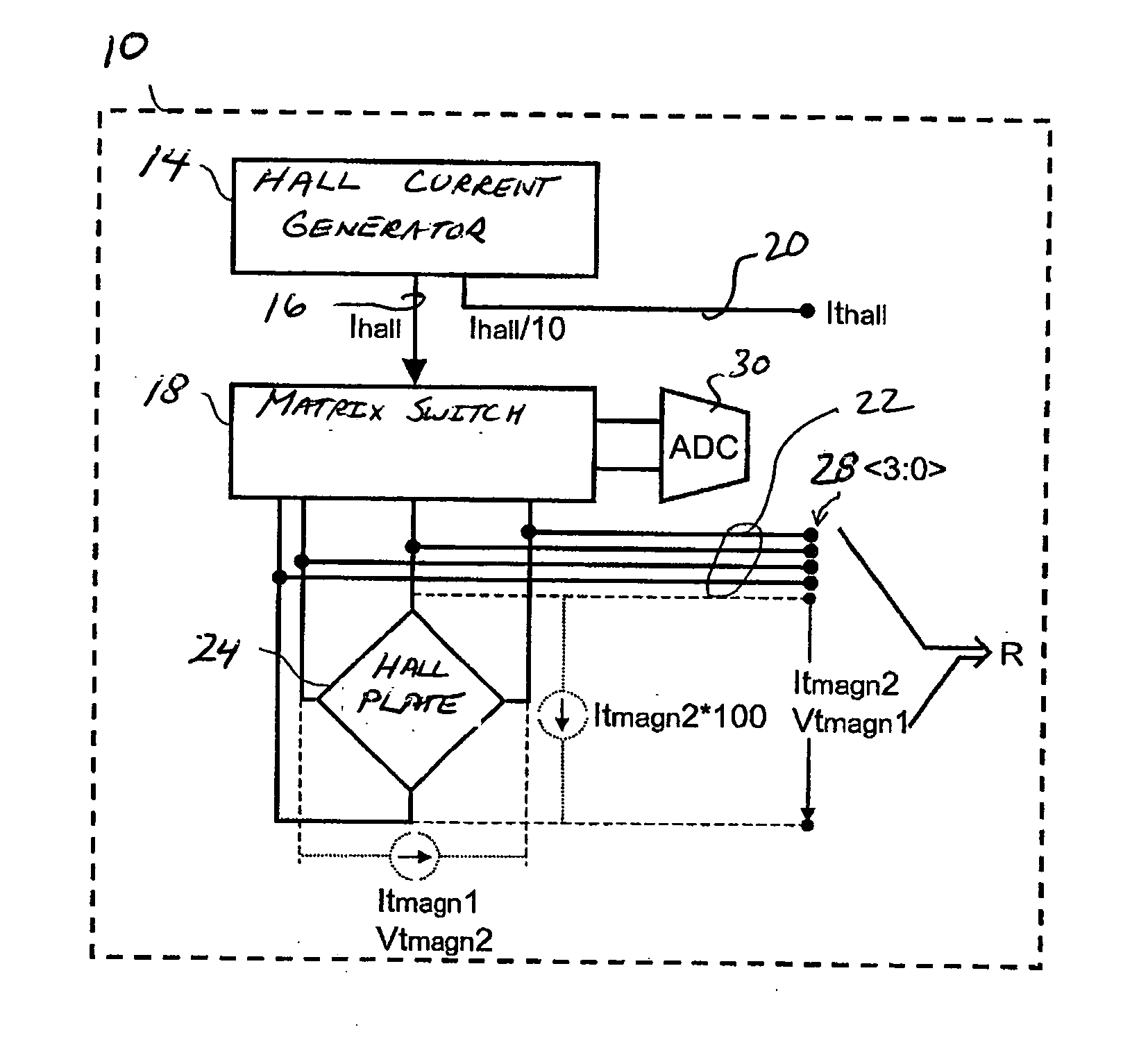Method for testing a hall magnetic field sensor on a wafer
a hall magnetic field and sensor technology, applied in the direction of voltage/current isolation, measurement devices, instruments, etc., can solve the problems of complicated mechanical system, increased hardware cost, and increased cost of the test equipment,
- Summary
- Abstract
- Description
- Claims
- Application Information
AI Technical Summary
Benefits of technology
Problems solved by technology
Method used
Image
Examples
Embodiment Construction
[0018] The FIGURE illustrates a block diagram illustration of a layout of components on a wafer or a corresponding Hall sensor configured in such a way that a metering current may be applied to check individual components, and especially the components of a signal pathway with respect to their electrical resistance R. From the electrical resistance the quality of the investigated segment can be determined, without having to apply an external magnetic field. One application which is advantageous is integrated Hall sensors with evaluation circuits.
[0019] A portion of a wafer 10 is shown for configuring an integrated circuit sensor. A reference current from a bias generator is input to a Hall current generator 14. Thus, the currents are generated in the bias generator, which provides reference currents and reference voltages for practically all the analog circuits on the sensor. The Hall current generator 14 outputs a Hall current as a metering current Ihall on a line 16 to a matrix s...
PUM
 Login to View More
Login to View More Abstract
Description
Claims
Application Information
 Login to View More
Login to View More - R&D
- Intellectual Property
- Life Sciences
- Materials
- Tech Scout
- Unparalleled Data Quality
- Higher Quality Content
- 60% Fewer Hallucinations
Browse by: Latest US Patents, China's latest patents, Technical Efficacy Thesaurus, Application Domain, Technology Topic, Popular Technical Reports.
© 2025 PatSnap. All rights reserved.Legal|Privacy policy|Modern Slavery Act Transparency Statement|Sitemap|About US| Contact US: help@patsnap.com


